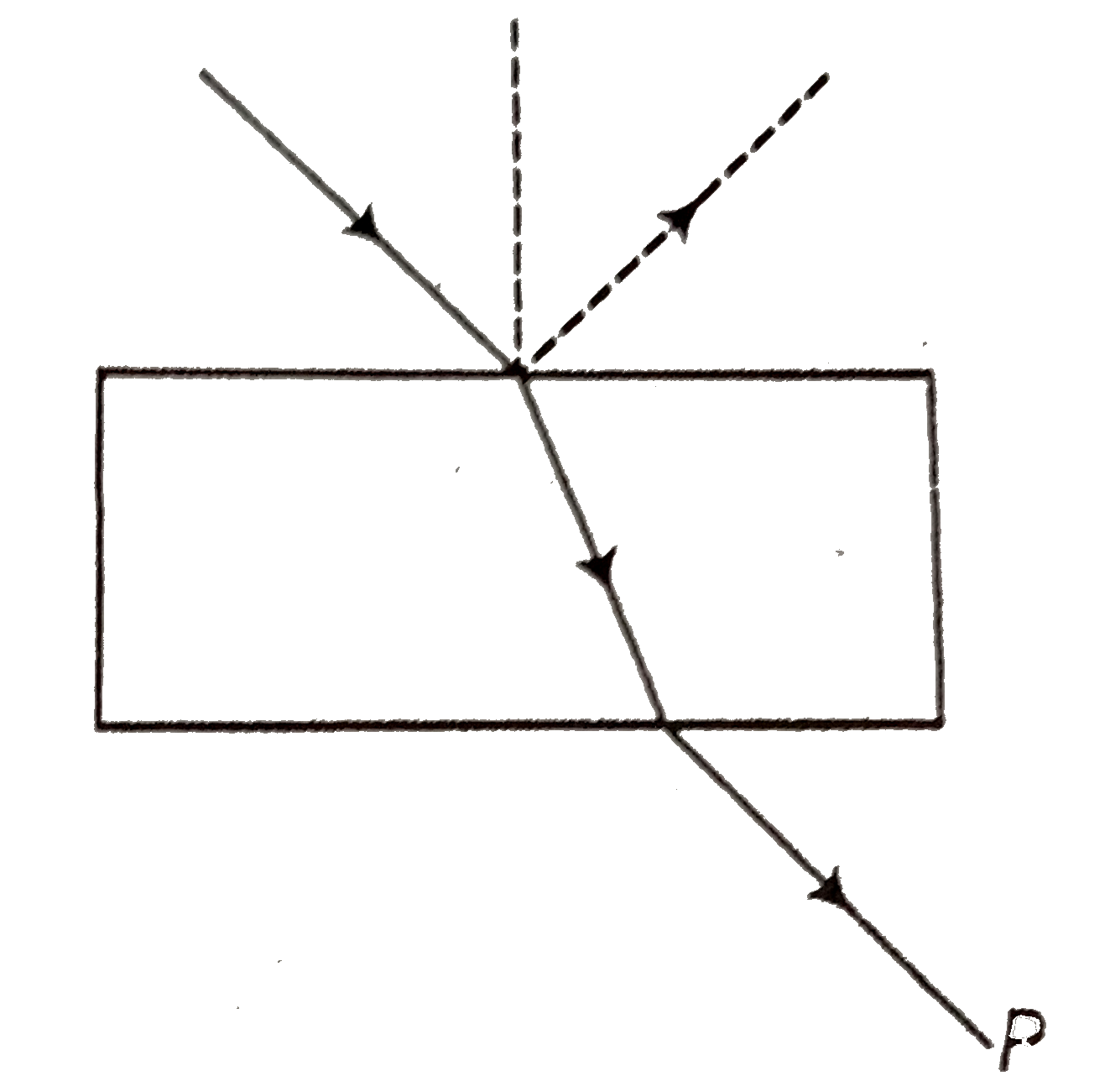Cathode rays can move the blades of the paddle wheel placed in its path.
Step-by-Step Solution:
1. Understanding Cathode Rays:
- Cathode rays are streams of electrons that are emitted from the cathode (negative electrode) in a vacuum tube. They are negatively charged particles.
2. Observation of Paddle Wheel Movement:
- When a paddle wheel is placed in the path of cathode rays, the blades of the paddle wheel begin to rotate. This indicates that there is a force acting on the paddle.
3. Interpreting the Movement:
- The movement of the paddle wheel suggests that the cathode rays are exerting a push or force on the blades. This force is a result of the momentum carried by the cathode rays.
4. Conclusion about Cathode Rays:
- Since the paddle wheel moves due to the impact of the cathode rays, it can be concluded that cathode rays consist of small particles (electrons) that possess mass and momentum. This movement provides evidence that cathode rays are not just waves or energy, but rather streams of particles.
5. Final Statement:
- Therefore, the ability of cathode rays to move the blades of a paddle wheel serves as proof that they are made up of small particles.
---
- Cathode rays are streams of electrons that are emitted from the cathode (negative electrode) in a vacuum tube. They are negatively charged particles.
- When a paddle wheel is placed in the path of cathode rays, the blades of the paddle wheel begin to rotate. This indicates that there is a force acting on the paddle.
- The movement of the paddle wheel suggests that the cathode rays are exerting a push or force on the blades. This force is a result of the momentum carried by the cathode rays.
- Since the paddle wheel moves due to the impact of the cathode rays, it can be concluded that cathode rays consist of small particles (electrons) that possess mass and momentum. This movement provides evidence that cathode rays are not just waves or energy, but rather streams of particles.
- Therefore, the ability of cathode rays to move the blades of a paddle wheel serves as proof that they are made up of small particles.
Topper's Solved these Questions
- ATOMIC STRUCTURE BOOK - ICSECHAPTER - ATOMIC STRUCTURE EXERCISE - EXERCISES (Short answer questions)
9 Videos
- ATOMIC STRUCTURE BOOK - ICSECHAPTER - ATOMIC STRUCTURE EXERCISE - Check your progress (Answer these questions)
5 Videos
- ATOMIC STRUCTURE BOOK - ICSECHAPTER - ATOMIC STRUCTURE EXERCISE - EXERCISES (Diagram based questions)
3 Videos
- CARBON & ITS COMPOUNDSBOOK - ICSECHAPTER - CARBON & ITS COMPOUNDSEXERCISE - OBJECTIVE TYPE QUESTIONS
23 Videos
Similar Questions
Cathode rays move towards
View SolutionA ray of light is travelling at an angle of 20° above the horizontal. At what angle with the horizontal must a plane mirror be placed in its path so that it becomes vertically upward after reflection.
View SolutionThe stopping potential in a photoelectric experiment is linearly related to the inverse of the wavelength (1λ) of the light falling on the cathode. The potential difference applied across an X-ray tube is linearly related to the inverse of the cutoff wavelength (1λ) of the X-ray emitted. Show that the slopes of the lines in the two cases are equal and find its value.
View SolutionCathode rays of velocity 106ms−1 d escribe an approximate circular path of the radius 1m in an electric field 300 V cm−1. If the velocity of cathode rays are doubled. The value of electric field so that the rays describe the same circular path, will be
View SolutionWhat is the difference between cathode rays and beta rays? When the two are travelling in space, can you make out which is the cathode ray and which is the beta ray?
View SolutionHow many of the following statement are true about the cathode rays?
(i) Path of travelling is straight from the cathode with a very high velocity as it produces shadow of an object placed in its path
(ii) Rays consist of material particle.
(iii) They deflect towards negative end of the electrode.
(iv) They produce yellow glow when the glass will beyond anode.
(v) Cathode rays penetrate through thin sheets of aluminium and metals.
(vi) They affect the photographic plates
(vii) The ratio of charge (e) to mass (m) i.e. charge//mass is same for all cathode rays irrespective of the gas used in the tube. e/m=1.76×1011Ckg−1
(viii) Cathode rays are visible at low voltage.
View SolutionA light ray is incident on a plane mirror at an angle of 30∘ with horizontal. At what angle with horizontal must a plane mirror be placed in its path so that it becomes vertically upwards after reflection?
View SolutionA prism of refractive index √32 and refracting angle is 45∘ is placed in air. One of the two refracting surface of the prism is silvered and a ray of monochromatic light enters the prism from the other face at an angle θ. If the ray retraces its path, then what is the value of θ (in degree)?
View SolutionA wheel having moment of inertia 4 kg m2 about its axis, rotates at rate of 240 rpm about it. The torque which can stop the rotation of the wheel in one minute is :-
View SolutionConsider a light beam incident from air to a glass slab at Brewster's angle as shown in figure.
A polaroid is placed in the path of the emergent ray at point P and rotated about an axis passing through the centre and pependicular to the plane of the polaroid.

View Solution
